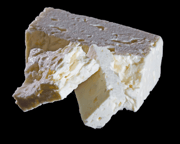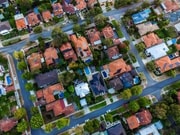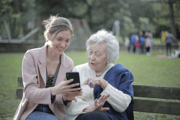
For many Australian seniors, social media has become a lifeline to family and friends.
But behind every like, comment, and shared memory lurked a growing threat.
Could your account be at risk without you even knowing?
With more than 1.9 million users over 65 in Australia, social media was no longer just for the young.
Yet, the rise in cybercrime had turned these connections into potential vulnerabilities.
Between 2021 and 2022, the number of hijacked social media accounts surged by 1,000 per cent, and one in five accounts faced hacking attempts annually.
Cybercriminals saw seniors as particularly valuable targets.
Australian users clicked an average of 22 adverts per month—almost double the global average—making compromised accounts profitable.
Older users often had established networks and financial resources, which scammers could exploit for fraud or identity theft.
Hackers aimed to monetise stolen identities, impersonate victims to scam friends, or lock users out to cause distress.
Why your account matters to hackers
Access to your trusted network of family and friends
Potential for financial scams through your connections
Your established credibility makes fake posts more believable
Business and page admin access if you manage any community groups
Spotting a breach early could prevent long-term damage.
Weak or reused passwords caused 80 per cent of breaches, but attackers had grown more sophisticated.
Signs included profile changes you didn’t make, unusual messages or posts, security alerts about password or two-factor authentication changes, and unfamiliar devices logging in at odd hours.
Essential security checks for seniors
- Review your email regularly for social media security notifications
- Check your Activity Log monthly for posts you didn’t make
- Monitor login locations for unfamiliar access points
- Watch for friends mentioning messages you didn’t send
If you suspected your account was compromised, immediate action was crucial.
The first step was visiting the official recovery page at socialmedia.com/hacked, ideally using a familiar device and browser.
Email notifications from social media provided reversal links to lock out attackers, and the identification tool at socialmedia.com/login/identify helped locate accounts if recovery details had been changed.
When locked out completely, users were prompted to provide new recovery details, submit ID, or answer account-specific questions.
Completing these steps on a recognised device improved chances of regaining access.
After recovery, securing the account was paramount.
Changing passwords, cleaning up login sessions, reviewing app permissions, and setting up two-factor authentication were critical.
Password managers and authentication apps like Google Authenticator offered stronger protection than SMS.
Prevention remained the best defence.
Unique passwords, caution with suspicious links, up-to-date recovery details, and limiting personal information shared online reduced the risk of future attacks.
Did you know?
Did you know? Over 60 per cent of hacking incidents involved phishing scams targeting login credentials, which had become increasingly sophisticated.
Seniors who used multiple connected platforms needed to be aware that compromised credentials could extend beyond social media.
Fortunately, some apps remained largely separate, but accounts linked to social media logins still required careful review.
Asking for help was not a weakness.
Trusted family, friends, or community volunteers could provide guidance or moral support during recovery.
What This Means For You
With more than 1.9 million Australians over 65 using social media, seniors were prime targets for hackers looking to exploit trusted networks and financial resources.
Recognising unusual activity early and acting quickly greatly improved the chances of recovering a compromised account.
Taking preventative steps, such as using strong, unique passwords and setting up two-factor authentication, was essential for long-term protection.
For seniors, understanding these risks and taking control of their online security meant they could continue enjoying social media safely, stay connected with family and friends, and protect their personal information from cybercriminals.
How to make sure your Facebook account never gets hacked — Provides guidance on securing Facebook accounts and preventing unauthorized access.
https://www.bitdefender.com/en-us/b...-sure-your-facebook-account-never-gets-hacked
Social Media Stats by Age and Demographics in Australia—2025 - < roi > AI GROWTH AGENCY — Reports that there are more than 1.9 million Facebook users over 65 in Australia, highlighting senior engagement on the platform.
https://roi.com.au/blog/social-media-stats-by-age-and-demographics-in-australia-2025/
Social Media Stats By Age—2025 Australia Demographics | ROI Growth Agency — Confirms over 1.9 million Facebook users over 65 in Australia, showing older Australians’ active use of the platform.
https://roi.com.au/blog/social-media-stats-by-age-demographics-australia-november-2022/
40+ Threatening Social Media Hacking Statistics [2025] — Details that 1 in 5 social media accounts faces hacking attempts annually.
https://cropink.com/social-media-hacking-statistics
40+ Threatening Social Media Hacking Statistics [2025] — Notes that from 2021-2022, the number of social media accounts hijacked increased by 1,000 per cent.
https://cropink.com/social-media-hacking-statistics
Social Media Statistics for Australia (Updated August 2024) Genroe — States that Australian Facebook users click an average of 22 adverts per month, almost double the global average, highlighting the attractiveness of senior accounts to scammers.
https://www.genroe.com/blog/social-media-statistics-australia/13492
40+ Threatening Social Media Hacking Statistics [2025] — Reports that 80 per cent of breaches occur due to weak or reused passwords.
https://cropink.com/social-media-hacking-statistics
40+ Threatening Social Media Hacking Statistics [2025] — States that over 60 per cent of hacking incidents involve phishing scams targeting login credentials.
https://cropink.com/social-media-hacking-statistics
Have you noticed unusual activity on your social media account, and what steps did you take to protect it?







